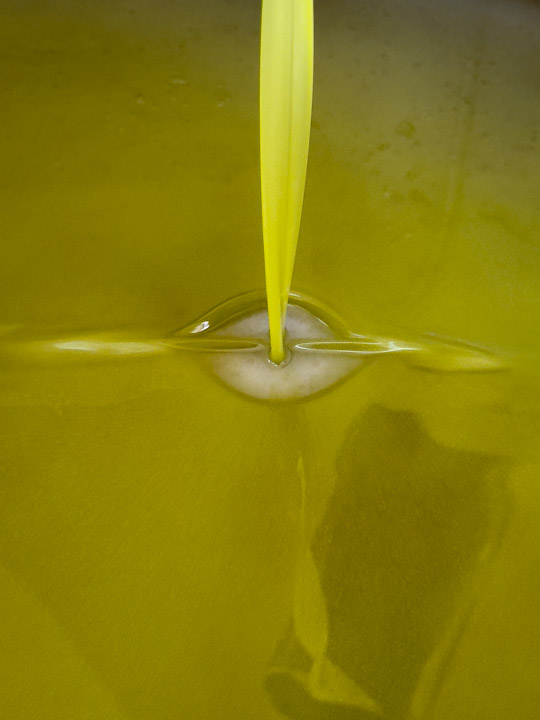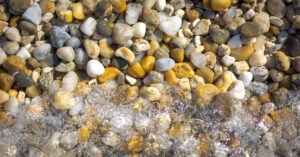It’s mid-fall, the season of olive picking in Croatia’s coastal regions. Every year, I travel there to take part in the harvest – one of the last forms of traditional work that still unites the people of the region.
There’s nothing glamorous about olive picking where I’m from. It’s always exhausting, often painful, and sometimes frustrating. We even look the part, swapping our cool summer outfits for our oldest, most rugged clothes; the stony terrain and thorny vegetation quickly destroy anything new. The village itself transforms – from a lively summer tourist destination to a quiet, empty place. Only the busyness of the local oil factory stands in contrast to the otherwise peaceful surroundings. It literally and figuratively shifts the locals’ focus from tourism to olives.
I love olive season in my village, as it’s a time when old traditions still feel alive. Everyone is busy and worn out, yet it’s impossible not to notice the satisfaction and love for olives that everyone radiates. You don’t get that special connection between people, the land, and the tradition during the high tourist season.
This year, we were blessed with a large harvest of healthy olives. The repetitive process of selecting, picking, and gathering each tiny fruit made me reflect on the whole experience. Harvesting olives isn’t just about gathering fruit – it’s about dedication, patience, and connection to the land and traditions. As I worked, I realized how much this process mirrors the journey toward success in other parts of my life. From that realization, it wasn’t long before I decided to share these thoughts in this blog.
Before I begin, let me clarify that I’m speaking from my own experience of olive picking, which may look very different in other parts of the world with different terrains, types of olive orchards, or farming practices.
Here’s my list of seven things olive picking can teach you about the road to success.
1. Work Within Constraints
Our constraint was time: we had only four days for the entire harvest. Local people take their time, ensuring they collect everything and even start preparing the trees for the next season. My father and I could have done more with more time, but we had to work within our limits. Similarly, you’ll encounter constraints in any project you start – whether a fixed deadline, the need to juggle other jobs or family responsibilities, or a tight budget. Whatever it may be, there’s no point in comparing yourself to others or complaining; you must create a plan that can work within your circumstances.
2. Choose Your Battles
Following the previous chapter, you can’t do it all. Naturally, you’d want to pick every olive, but sometimes it’s best to leave those hard-to-reach branches and use your time more effectively elsewhere. “It might be useful” isn’t always enough of a reason to invest effort. The real questions are, “How useful is this?” or “Is there a better use of my resources?” For example, I often mention my intention to use Instagram, but I’ve put it on hold. It takes too much time and effort to do correctly by the algorithm’s standards, so I focused on what I judged to be more important or helpful in the short term.




3. You Can’t Rush It
The way we pick olives, you gather them one by one, and no amount of “hustle” will speed up the process significantly. Sometimes, you think a tree is finished and are eager to move on, only to notice another full branch and feel like the work will never end. But little by little, the bags fill up, the branches empty out, and you get closer to the finish. The key is to persevere and not give up too soon. I often feel the same with my photography project. I work hard only to discover more things I need to get under control before I can move to the next phase.
4. It Requires Grit and Resilience
Some parts of olive picking are easy and enjoyable but be prepared to endure your share of physical exhaustion, strained muscles, and injury from sharp thorns and stones. It’s all part of the experience – and, ultimately, what makes the success so much sweeter. Admittedly, I don’t enjoy every part of my photography project, but I’m doing my best not to be discouraged by anything. Sometimes, you simply have to push through the thorns to reach the best branches.



5. It’s Easier Together
Yes, you could theoretically do everything alone, but it would take forever. You’re more efficient and have more fun working with someone, and the celebration at the end is even better when shared. I miss that aspect in my current photography project. Yes, I have supporters who will celebrate successes with me but, when it comes to the tasks that need finishing, they all wait for me.
6. You Judge the Results at the End
Even after you’ve gathered all the olives, you don’t truly know how successful you were until they’re pressed. Locals will ask, “How much did it throw you?” meaning, what percentage of oil did you get from the total mass? This year, for example, we obtained 30% more oil than we did two years ago from the same amount of olives. In most projects, you work without knowing the final outcome, but that shouldn’t stop you from celebrating victories along the way – like a day of hard work ending with bags full of beautiful and fatty olives.




7. It Doesn’t Depend Solely on You
Every year is different, and sometimes there simply isn’t much to harvest. My family lives far from the village and can’t tend to the trees during the year, but regardless, some harvests fail despite all the preparations. It’s the same with success: you can do everything right, but that final element of luck isn’t in your control. Still, if you show up and do the work, most of the time, you will have something to harvest and be rewarded with some level of success. I’m counting on that in my photography project – I don’t know how big the “harvest” will be, but I’m doing my best to do my part. And so should you!
In the end, olive picking reminded me that success isn’t just the final result – it’s the effort, the grit, and the journey itself. Whatever your harvest looks like, the work you put in makes it worth celebrating.
In the next post, I’ll look from the opposite side – i.e., where olive picking differs significantly from my photography project and what challenges come with it. Stay tuned…





